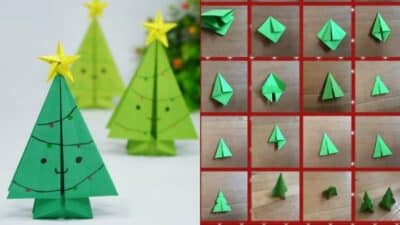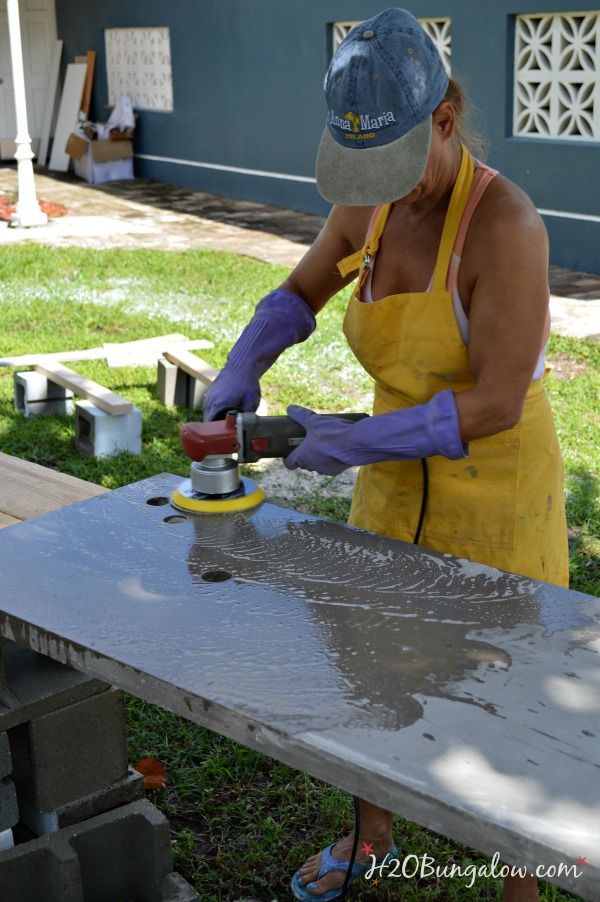
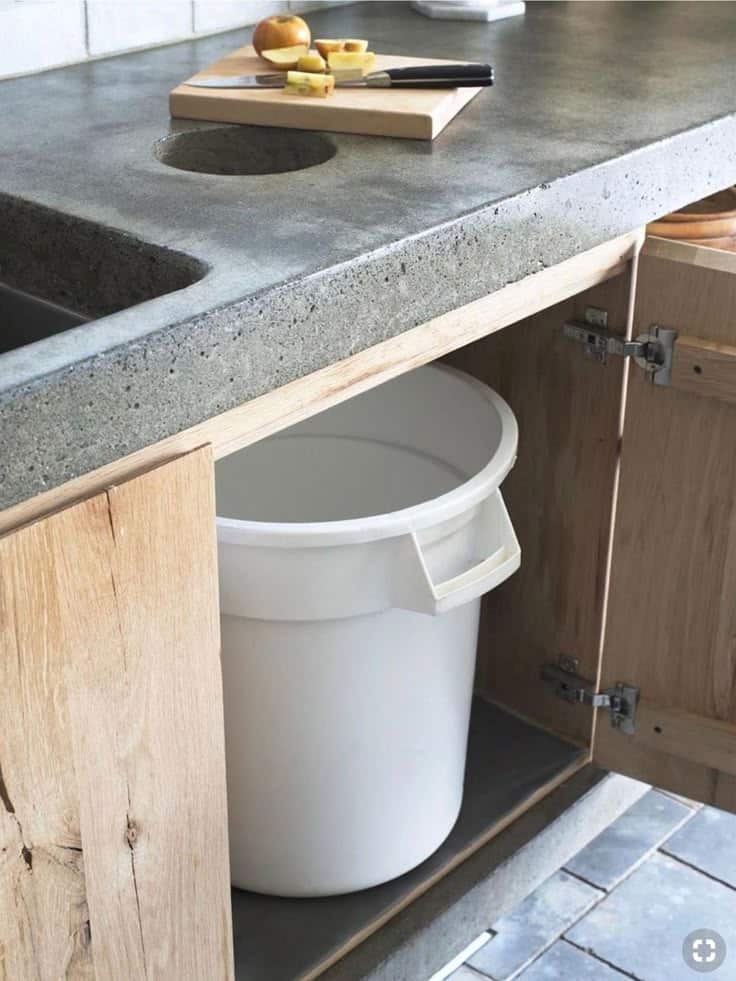
Concrete countertops offer a unique blend of industrial chic and custom design potential, all while potentially saving thousands compared to traditional stone options. So it’s no wonder you’re asking: how can I make DIY concrete countertops?
The basic process involves building forms, mixing and pouring concrete with reinforcement, allowing 28 days for proper curing, then finishing with sanding and sealing. This can be completed over several weekends with about $200-400 in materials.
While this simple overview gives you the basic steps, there are crucial details about form construction, concrete mixing ratios, and finishing techniques that can make the difference between a professional-looking result and a costly mistake. Keep reading to learn the exact specifications and common pitfalls to avoid.
What Tools And Materials Do I Need For DIY Concrete Countertops?
Before starting your project, gather these essential concrete countertop supplies: melamine boards for forms, concrete mix specifically designed for countertops, reinforcement mesh or rebar, concrete sealer, and release agent. For tools, you’ll need a drill, circular saw, level, concrete mixing tools, and finishing supplies like sanders and polishing pads.
The most critical component is selecting the right concrete mix. Don’t use standard concrete from home improvement stores – instead, invest in a specialized countertop mix that includes fine aggregates and additives for strength and workability. Expect to spend around $150 just on the concrete mix for an average kitchen.

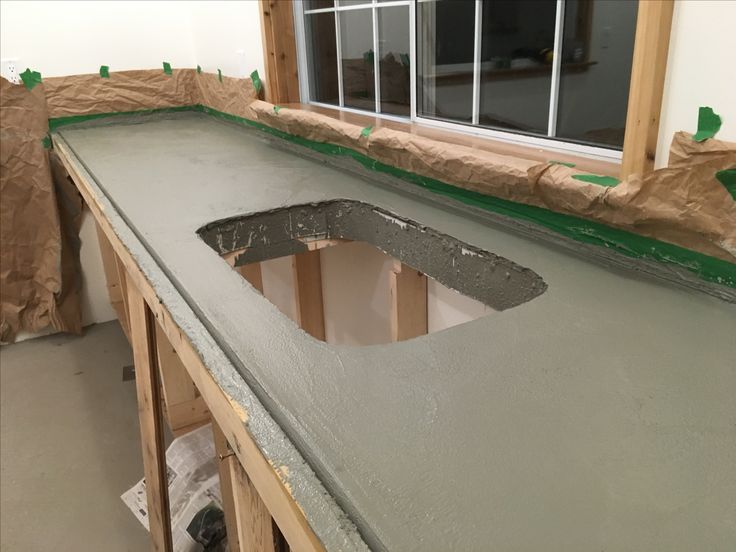
What Are The Most Common Mistakes When Making Concrete Countertops?
The biggest pitfall is rushing the curing process. Concrete needs a full 28 days to reach maximum strength, and trying to speed this up can result in cracking and weakness. Additionally, many DIYers make their forms too flimsy, leading to bowing and uneven surfaces during the pour.
Another frequent error is improper sealing. Concrete is naturally porous and needs thorough sealing to prevent staining and bacterial growth. Multiple thin coats of sealer work better than one thick coat, and you’ll need to reapply sealer every 1-2 years.
How Do I Get A Smooth, Professional Finish On My Concrete Countertops?
The secret to a glass-like finish starts with proper vibration during the pour to eliminate air bubbles. Use a palm sander against the form sides while pouring, and tap the surface with a float to bring cream to the top. After curing, start with 80-grit diamond pads and work your way up to 3000-grit for a polished finish.

For colored countertops, use integral pigments rather than surface stains. Mix the color thoroughly into the concrete before pouring, and make enough for the entire project at once to ensure color consistency. Consider making small test pieces first to perfect your technique and confirm your chosen color.
How Long Will My DIY Concrete Countertops Last?
With proper installation and maintenance, DIY concrete countertops can last 20-30 years. The key to longevity is preventing cracks through proper reinforcement and curing, along with maintaining the sealer to protect against stains and moisture penetration.
Regular maintenance includes cleaning with pH-neutral soap, avoiding harsh chemicals, and using cutting boards to prevent scratches. Watch for any signs of sealer wear, particularly in high-use areas around sinks and stovetops, and reapply sealer before water starts soaking into the concrete.
How Much Money Can I Save By Making My Own Concrete Countertops?

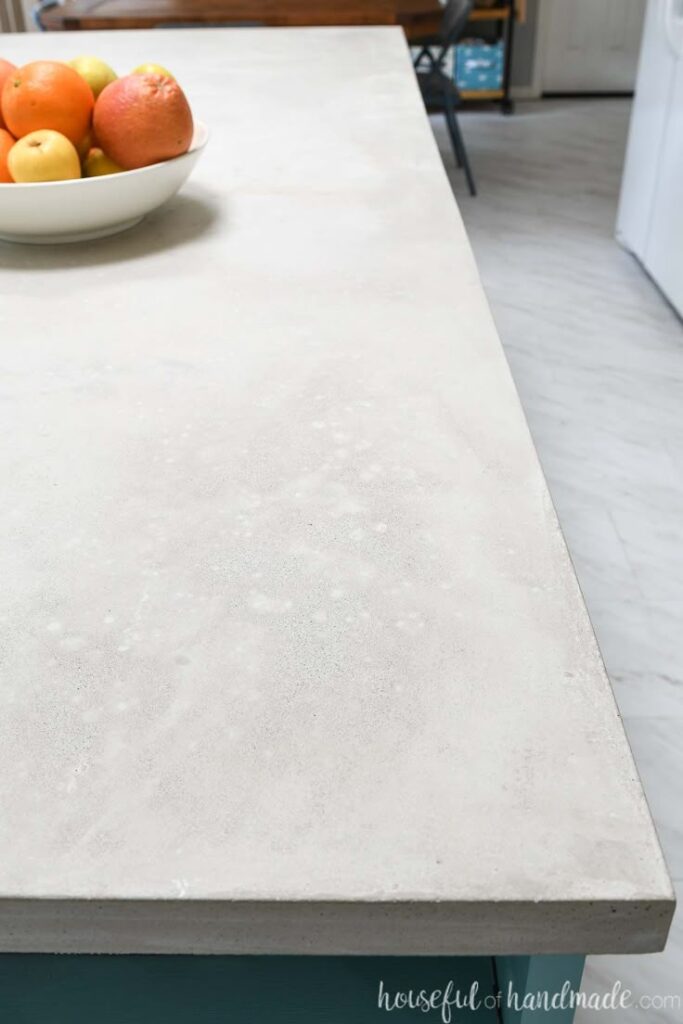
Professional concrete countertops typically cost $65-135 per square foot installed, while DIY versions usually run about $20-40 per square foot in materials. For an average kitchen with 30 square feet of countertop space, this translates to potential savings of $1,350-2,850.
However, factor in the cost of tools if you don’t already own them, and consider the value of your time. A first-time DIYer might spend 40-60 hours on the project from start to finish. Also budget for potential mistakes – many DIYers make a practice piece first or need to remake sections that don’t turn out perfectly.
The real value comes if you plan to do multiple projects or if you particularly enjoy the crafting process. The skills and tools acquired can be applied to future projects, making subsequent attempts more cost-effective and successful.
Ready to Start Your Concrete Countertop Journey?
Before diving into your full kitchen project, start by creating a small concrete piece like a bathroom vanity top or outdoor table. This practice run will help you master the techniques of forming, pouring, and finishing concrete while minimizing the risk and cost of potential mistakes. Once you’ve successfully completed this smaller project, you’ll have the confidence and expertise needed to tackle your main kitchen countertop installation.
- 0shares
- Facebook0
- Pinterest0
- Twitter0


